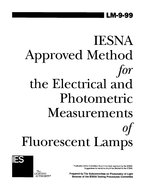In brief, this Technical Memorandum describes the retinal mechanisms involved when optical radiation signals are converted into neural signals (a phenomena called phototransduction) for vision and for other body functions. Optical radiation reaching the retina not only impacts on how humans see the world, it also regulates physiology and behavior, both directly and indirectly. This includes acute effects such as suppressing pineal melatonin production, elevating morning cortisol production, increasing subjective alertness, enhancing psychomotor performance, changing brain activation patterns to a more alert state, elevating heart rate, increasing core body temperature, activating pupil constriction, and even stimulating circadian clock gene expression.





IES TM-18-18
Original price was: $50.00.$25.00Current price is: $25.00.
Light and Human Health: An Overview of the Impact of Optical Radiation on Visual, Circadian, Neuroendocrine and Neurobehavioral Responses
Illuminating Engineering Society , 04/01/2018









